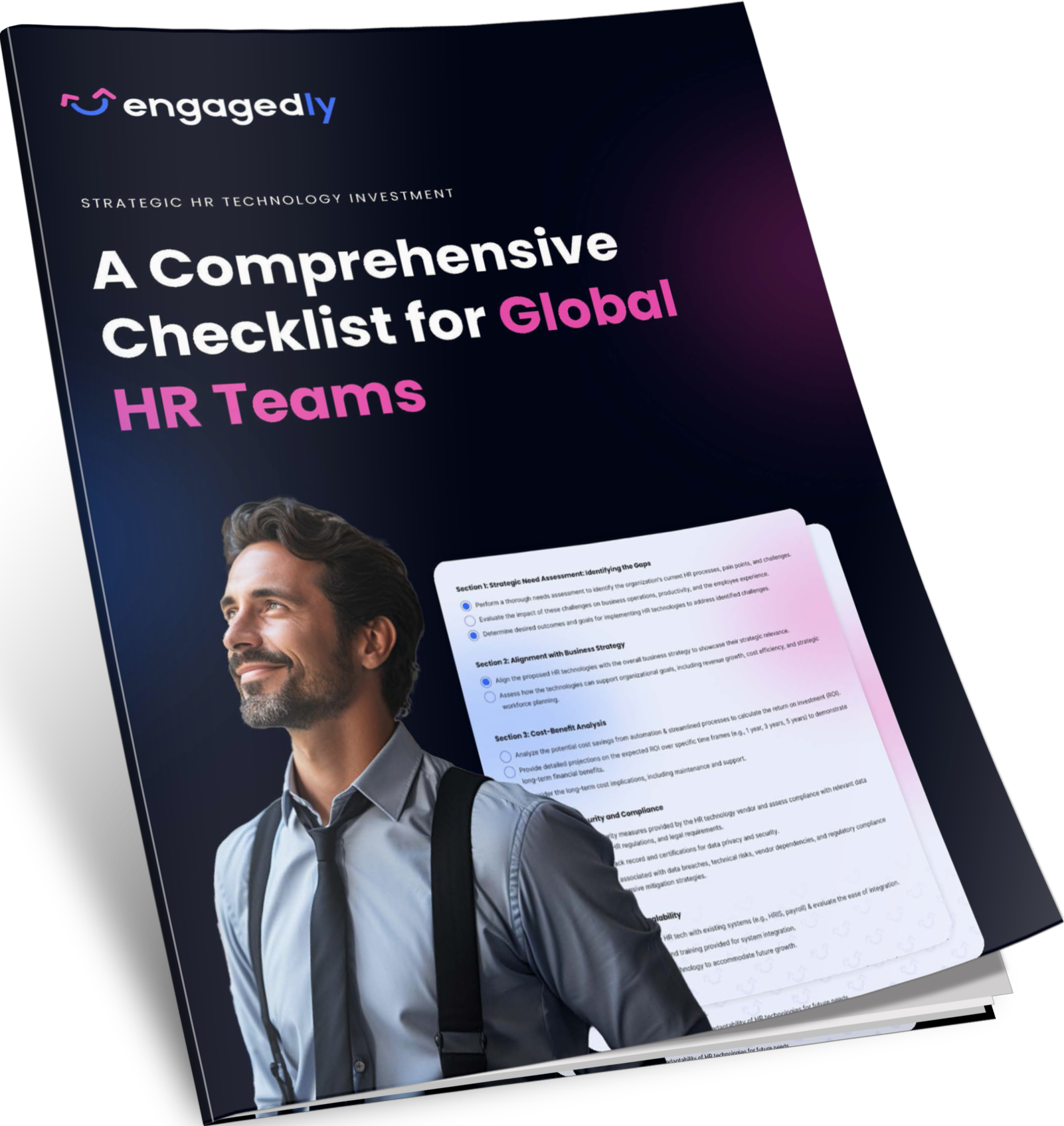Performance review is a term both managers and employees dread hearing. Most managers think it’s a waste of time, and most employees believe it doesn’t improve their productivity. Research has found the old traditional once-in-a-year employee performance review is becoming very unpopular.
A study published by Workhuman showed companies using annual performance reviews declined on a year-to-year basis from 2016 to 2019. It reduced from 85% to 54% in the years under study. There is talk of the growth of more agile companies that will succeed from continuous feedback, and the rise of the 360 degree feedback system is one sign of this change.
This article will explore the meaning of an employee performance review, the benefits of using them, and tips to improve it.
What is a Performance Review?
A performance review is an assessment carried out by managers to rate the performance of employees over a specific period. The goal is to help the employees improve on their weaknesses while also encouraging and rewarding them for good work. In the past, most companies conducted annual performance reviews to look retrospectively and grade the employee, which would qualify them for a bonus or promotion. But now it has become more future and development focussed.
Most of the feedback wasn’t helpful since they were after many months. Recently, companies have adopted quarterly, monthly, and some weekly reviews to improve the effectiveness of the employee performance review. Noting that a frequent review will lead to improved performance from the employees, leading to better results for the company.
Benefits of Performance Review
Conducting an employee performance review can lead to many benefits for a company. In this section, we will discuss some of them.
-
It Helps Employees to Stay Engaged
An employee performance review helps to keep the employees engaged. Most employees want feedback for their work, and studies have shown a 23% increase in a company’s profitability if they have an engaged workforce.
-
Recognize and Reward Achievements
A job performance review is also a time to reward the achievement and efforts of their workers. Doing this will serve as an encouragement and incentive for them to work harder and do more for the company. Statistics have shown that recognition is an excellent incentive for employees, and employees quit their jobs because of a lack of recognition. Rewards like bonuses and promotions are powerful incentives for employees.
Also read: Employee Rewards and Recognition For An Engaged Workforce
-
It Addresses Areas that Need Improvement
An employee performance review is vital in helping to address the areas that need improvement. The manager and staff can discuss the areas that need fine-tuning and discuss the steps, training, or activities they can incorporate to help them improve.
-
Provides a Place for conversation
A review is also a time when a two-way conversation can take place. Since daily activities may not permit the time to sit and have long discussions on performance, a performance review is a perfect occasion. The conversations can cover topics ranging from hindrances stopping the employee from doing their job to advice or tips on their career path. It can be a place to find guidance and motivation.
-
It Improves Communication
A crucial benefit of an employee performance review is it helps to improve the communication between the team or group. It helps to clarify the goal and aim of each individual in the organization. Misunderstandings about carrying out an assignment or project are removed through frequent reviews. It also can help to provide regular guidance and direction.
Also read: How Internal Communications Can Align Your Employees With Organisational Goals
Tips To Improve Employees Performance
90% of HR leaders believe annual performance reviews don’t reflect accurate information, while 51% of employees believed their performance review was wrong. There is a cry to improve performance reviews, and in this section, we will help by giving some tips we think will be helpful to you.
-
Learn to Host Regular Review Sessions
The first tip is to adopt a culture of hosting regular reviews. If an annual performance review is the only source of feedback your employees receive, then it’s likely they aren’t performing at their best. Alternatively, if you are a manager, you can adopt a walk-in feedback session, a monthly or a quarterly review session. Practising this allows you to monitor your team closely and gives you more data to work with when giving an annual review.
-
Prepare For the Meeting
This point is obvious, but it’s vital to re-emphasize it. Preparing for a meeting is on two levels. Since you are not going into a meeting with yourself, schedule a time convenient for both of you. You can share your calendar with your team and agree on the dates to meet with each of them.
You should also collect all relevant data on the employee. Use the 360 degree feedback system to help you collect feedback from colleagues, other managers, clients, and peers, along with your notes. You will have the data needed for an objective review. The last thing to do in preparation is to have a list of topics you will discuss.
You can decide to share the subjects with the staff, but we advise you to give the employee some heads up on what you will discuss. Doing this will make the process less anxious for both the manager and the employee.
-
Clear definition of Performance Criteria
Have a clear criterion to measure excellent performance is. The company should provide a proper explanation and detailed breakdown for both the manager and the employee. There should be a rational way to measure impact and define success.
A system that allows and accurately describes the quantitative and qualitative aspects of the rating. This clarification is to limit bias and unjust ratings, bringing about transparency.
-
Ask the Right Questions
An employee performance review session is not an interrogation session. The employee should see you as a coach or mentor. Ensure your questions are not ‘leading questions’ in nature. Leading questions makes assumptions.
A good example is, “I saw you taking your time with the assignment. Why were you struggling?” This question assumes the employee struggled because they took their time on the project. It puts the employee on the spot, making them more likely to lie – rather than correct that notion (If wrong).
The manager can phrase the question as “What was easy and difficult about the assignment?” This question gives room for the staff to explain themselves. If the assignment is difficult or easy, you will hear it in their explanation. Other generic questions you can ask include:
What obstacles did you face?
What accomplishment are you proud of?
Remember, the aim is not to come on as a judge, but to appear like a coach.
-
Improve on How Feedback is Given
Feedback is one of the crucial aspects of a job performance review. In sharing feedback, avoid falling in the feedback sandwich loop. A feedback sandwich is when a manager gives positive feedback and then follows it up with a negative one before finally crowning it up with a positive one.
While the intention is to soften the blow of the negative comment, it can have different effects on different recipients. Some may decide to ignore the positive part of the comment, while others take only the positive portion. This style defeats the goal of employee feedback.
Instead of the sandwich method of giving feedback, use an approach that separates positive and negative feedback. An example is if you are giving negative feedback, provide examples of how their actions are affecting the business or teammates in real-time. Ensure the person understands this and then suggest potential solutions to address it or them.
The positive feedback should also highlight how well the employee has done and how well their actions have helped move the department or company forward. The whole point is to be straightforward when giving feedback.
Also read: 10 Best Employee Feedback Tools To Track Performance
-
Constructive Feedback
Constructive feedback is a type of feedback where managers try to provide feedback to their employees constructively. The main aim is to share feedback in a way which doesn’t discourage them and instead make feedback a yardstick for growth and development. It helps employees to solve their work-related issues and problems.
-
Be an active listener
A performance review is a two-way discussion and, in as much as the employee is the one receiving their review. It is vital to listen to what they have to say. When managers listen, they show their employees they care about their growth.
This view is powerful because it determines if the employee sees you as someone on their side or not. It’s easier to take feedback from someone you feel is trying to help you. To ensure you are listening to your team members, summarise what they have said and repeat it to them.
Try not to ignore them and give a rehearsed answer as this shows them you didn’t listen to them but only heard their voice.
-
Get the employee feedback on their performance
Days before the reviews, give the employees their review form to fill. Let them also score themselves and provide honest feedback on what they have done so far. You will be shocked by how self-aware some of them are.
This makes the conversation flow naturally, and it’s faster to agree on the steps to take going forward. You will have some problems if you perceive the employees differently from how they perceive themselves. Then the manager and the team member will discuss why they see things from different views for the performance review.
-
Decide on the next steps
A good tip for a review is to have an action plan. It isn’t enough to give feedback on areas to improve, but also practical steps or actions the employee can take. A good employee performance review should leave the employee feeling motivated and directed at what to do next.
-
Follow-up
A performance review should be an ongoing exercise and shouldn’t stop when the employee leaves. A follow-up is also part of the process. Keeping tabs on the employee’s performance will help them stay accountable and bring out the best in them.
Using Software In Performance Review
Gathering data, monitoring goals, and giving feedback to a team of individuals is time-consuming and hectic. A study found it takes a manager an average of 17 hours to prepare for an employee performance review. Monitoring and giving feedback in real-time can help improve productivity and create a culture of regular feedback.
An employee performance review software makes the process simpler and effective. Most performance review software has inbuilt and integrated 360 degree feedback, goals, feedback, survey, learning, and recognition modules. So, using employee performance review software makes the complete process more holistic. Moreover, all the information regarding an employee is available at the same place and allows everyone to access historical data on employee performance.
Conclusion
In conclusion, improving the performance review of any company will require the organization to take a step back and look at what they are doing wrong. It requires them to understand and know their employees and take steps in the right direction. The tips which we have mentioned above will make the process more effective.
Do you want to know how Engagedly can help you with employee performance review? Request a demo from our experts.


